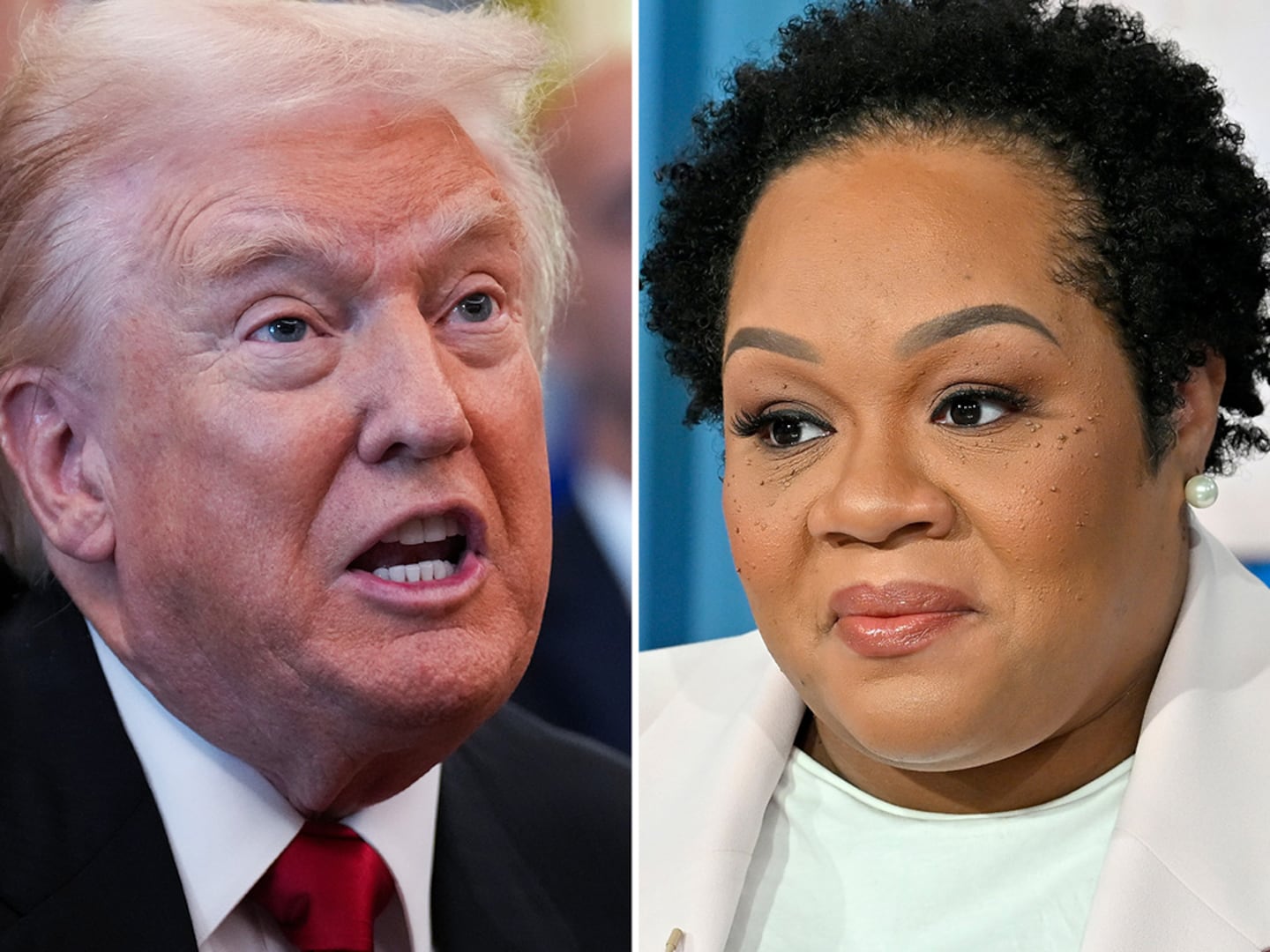First of all, Dimes Square isn’t a square, it’s a triangle. Technically, the infamous headquarters of a hyper-specific, hyper-online scene of overeducated young tastemakers (Artists? Influencers? Rich kids? Whatever) falls at the intersection of Ludlow Street and Canal on New York’s Lower East Side, but metaphorically, Dimes Square occupies both a number of adjacent city blocks and the minds of New York City media professionals, few of whom have yet grown tired of talking about the place.
In the past few weeks alone, the trend pieces and analyses have continued to stack up. On Aug. 9, The New York Times weighed in on the burgeoning Catholicism trend: young Dimes Square acolytes like Wet Brain podcaster Honor Levy are acknowledging their mortal sins and embracing religious ritual, apparently.
In July, Women’s Wear Daily ran two Dimes Square pieces in one day; a particularly dizzying scene dispatch in The Baffler from May proclaims that “this [Dimes Square] moment is straight out of Jewish mysticism (this section is called ‘Go Piss Girl walks down Shtiebel Way’).” On Wednesday, Bon Appétit sniffily proclaimed in its headline: “Do You Need to Care About Dimes Square? Probably Not,” adding its “great restaurants” were “the only reason to visit” (a pretty compelling reason, no?).
As both a journalist and a young woman who’s intimately acquainted with Dimes Square, I often wonder why I find this scene, with its gorgeous skater boys and smelly dive bars and literary clout-chasing and rigorously gatekept boutiques, so endlessly fascinating.
There’s an ache to be at the center of things, and I’m not even positive what those things are, that pulls me in. No matter how asinine the gossip or how mid the $30 entrees, I keep coming back for more.
“I feel like [Dimes Square] was like NYC was like in the ’60s, everyone talking so much,” Cat Marnell, author of the searing addiction memoir How to Murder Your Life, told The Daily Beast. “There’s no music or clubs because of COVID, and so everyone had to talk and talk.”
Steven Phillips-Horst, co-host of the podcast Talk Hole, says he coined the term Dimes Square in either 2016 or 2017. “Originally I meant it as kind of shorthand for the greater Dis magazine art scene that was kind of bleeding into fashion/branding/[the] mainstream,” Phillips-Horst told The Daily Beast. “Girls in big pants heading to freelance coffees, etcetera.”
“Then Anna and Dasha really helped push the term Dimes Square into the mainstream, more as a joke about dilettantes and fashion vultures than as a sacrosanct political ethos,” Phillips-Horst said. “Now the media sort of holds it up as a bogeyman, because it feels like a club they’re not invited to.”
Phillips-Horst is referring to Anna Khachiyan and Dasha Nekrasova, co-hosts of Red Scare, a cultural commentary podcast that’s either hilariously subversive or blatantly fascist, depending on who you ask; either way, the podcast has become an indelible cultural touchstone of “the dirtbag left” and the perils of Trolling While Hot.
Khachiyan and Nekrasova frequently catch merited flack for their commentary: “Woody Allen legitimately did nothing wrong,” liberal deployment of the word “retarded,” and so on. But like it or not, the two are indisputably key scene figures. And honestly? Their live show with notorious Instagram flower-crown fiend Caroline Calloway was iconic.
On several first dates, men have said something to the effect of “Dasha follows you? Nice. Anyway, who should I pitch at the Times?"
Nekrasova declined to comment for this article.
Since New York City became New York City, faddish neighborhoods have come and gone as they’re first established as cool-kid stomping grounds (beat poets in Greenwich Village in the ’60s, the East Village of the ’70s) and eventually overrun with posers and normies.
Dimes Square, which The Guardian recently described as “an unremarkable concrete triangle speckled with a few good bars,” perhaps captures the imagination so well because of the possibility it embodies: sitting on the intersection between Chinatown and the Lower East Side, just as reporters and socialites are beginning to tire of Scene Analysis, Dimes Square represents prime real estate for new restaurants and Nine Orchard, a contentious new luxury boutique hotel.
What once felt like an in-crowd secret is curdling. With every article, Substack entry and half-scathing, half-affectionate tweet about Dimes Square, the scene, whatever it is or whatever it was, gets run further and further into the ground.
The energy is getting dark. In the wee hours of Wednesday morning, a Kyle Rittenhouse lookalike was spotted at Clandestino, a key Dimes Square watering hole, sparking a mini online brouhaha. (The Daily Beast reached out to Rittenhouse and the bar for comment.)
Last week, writer Mike Crumplar recounted being ganged up on and humiliated while participating in the filming of a movie by downtown actor-director Peter Vack. Vack and his sister Betsey Brown, Crumplar says, were retaliating against him for publishing a negative review of a film they’d made previously, and encouraged a crowd of extras to taunt and sling insults at Crumplar and then demand that he apologize for writing the review.
“The downtown fascist mediocrities shamelessly revealed to me their true ugliness and the utter emptiness of their ‘art,’” Crumplar tweeted.
“I think I make these people mad because I’m close enough to them to have a genuine sense for what it is they desire, but far enough away to be able to articulate it for a broader audience,” Crumplar told The Daily Beast.
So, who and what will you find there? Dimes is a Canal Street eatery that offers acai bowls and specialty cocktails, and has long been a go-to hangout for louche, cosmopolitan fuckups of all kinds since it opened in 2013. Clandestino, aforesaid home of the lookalike Kyle Rittenhouse, is small, paneled with dark wood and constantly bursting with the pretenses of its patrons, who tend to be young, stylish, insecure, and hungry.
Dimes Square habitués, not yet mentioned, include Claire Banse and Michelle Guterman, a.k.a. Gutes. They’re the founding editors of The Drunken Canal, a pandemic-hatched monthly newspaper filled with goofy columns, poems and personal ads.
Nate Freeman held court at Artnet as the columnist behind Wet Paint, a weekly compilation of salacious art world gossip and analysis. He’s since moved to Vanity Fair. Annie Armstrong, Nate’s successor at Artnet, fills her dispatches with juicy items. East Villains, a brotherly clan of successful transplant TikTokers who spend their days documenting their exploits at standbys like Ray’s, Flower Shop and Blue & Gold, are newer to the scene, but they epitomize its cringiest aspects—all you have to do is be hot and kind of hang around, and you’re Dimes Square-adjacent certified.
Much ink has been spilled in speculation about the political predilections of the Dimes Square set—is the scene indeed a hotbed of fascist intent, or is it a psychic space clamoring with the confused flounderings of “anti-woke artists,” who are merely naive? What it’s not is a leftist paradise—it’s a grunge mall.
“The Dimes Square scene is small, but its ascent highlights a culture-wide shift,” Julia Yost wrote in the New York Times on Tuesday. Taylor Lorenz, a tech columnist at The Washington Post, doesn’t agree.
“It's the exact opposite,” Lorenz tweeted. “This entire ‘scene’ is composed of maybe 2,000 people with *zero broader cultural relevance* and the media needs to stop falling for it.”
Clearly, something that used to be organically interesting and vivid is being endlessly unpacked, parsed, exalted, and mocked to the point of collapse.
Maybe this is good. Maybe we need a new scene. Maybe we need a fresh crop of major players and we need to find a new cluster of dimly-lit bistros in which to hang out and hook up.
“Dimes Square represents the broken promises of modernity,” writer and organizer Matthew Miles Goodrich told The Daily Beast. “Its denizens flout a decadent, suffocating culture. The vibe shift cometh.”
“Dimes Square isn’t dead, but maybe we’ve seen its high water mark already,” Crumplar said. “Or at least that’s how people seem to be talking about it now. But there will be new scenes, new trends, that will come from the same class of young bourgeois artist-settlers, if not the literal same people reinventing themselves somehow.”






